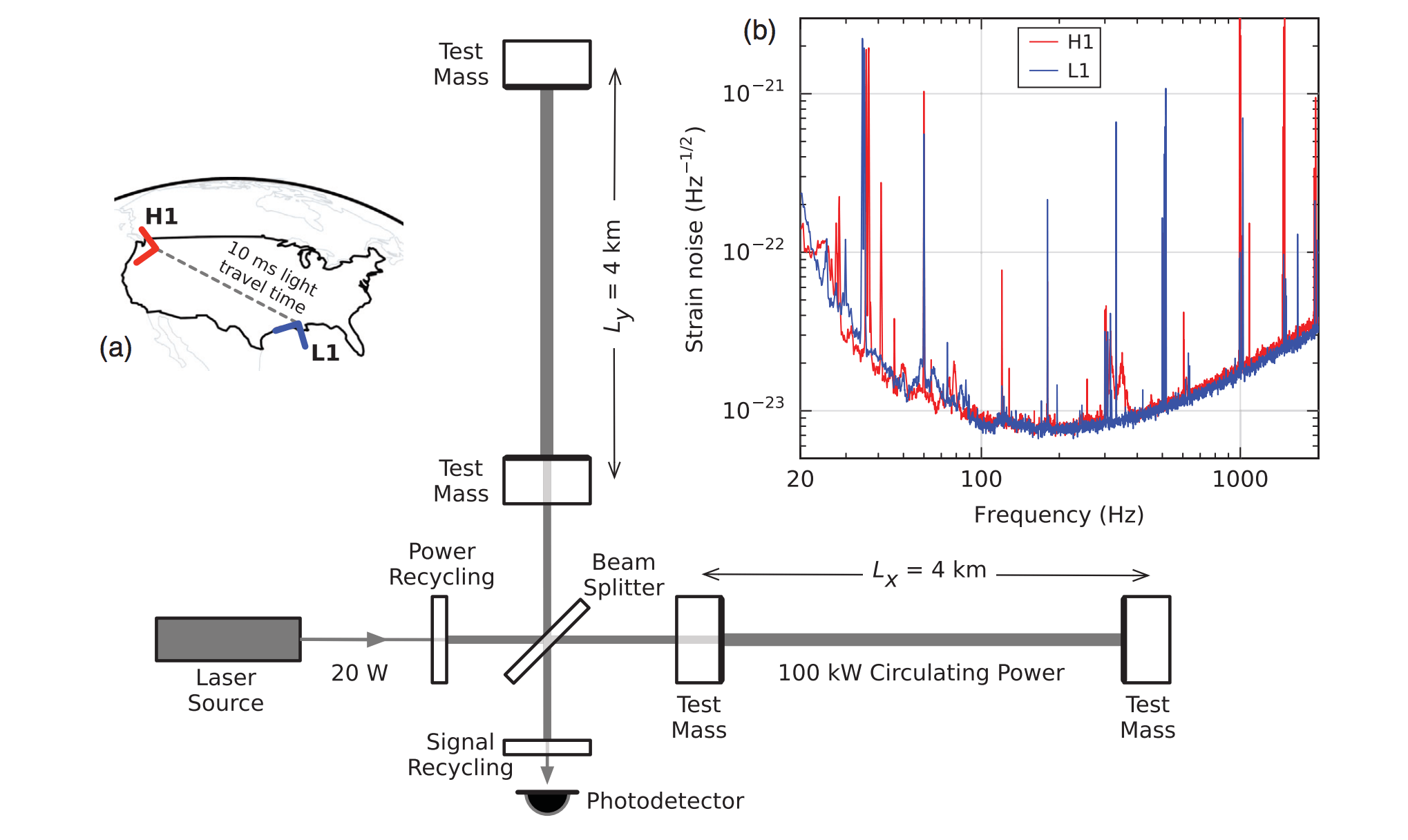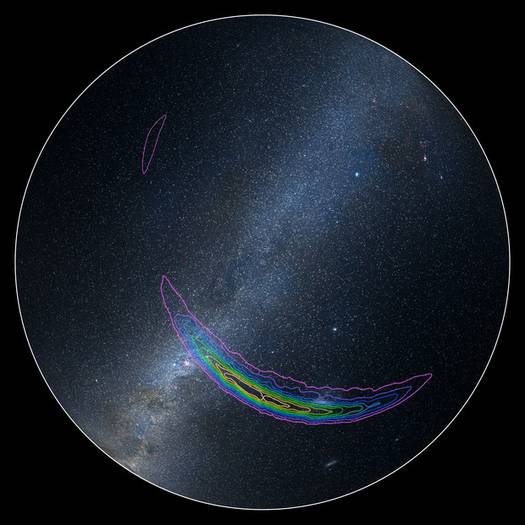The approximate location of the source of gravitational waves detected on September 14, 2015, by the twin LIGO facilities is shown on this sky map of the southern hemisphere. Image © LIGO/Axel Mellinger
As the name suggests, Advanced Laser Interferometer Gravitational-Wave Observatory (aLIGO/LIGO) basically works on the principle of the interferometer, a modified Michelson interferometer. Each aLIGO observatories consists of two, vacuum, 4 KM long, arm-like structure, and each arm is attached by mirrors at the respective ends. Here, the mirrors act as a test mass. If an observatory detects the gravitational wave then arm lengths will be altered and the difference is calculated by ΔL(t) = δLx − δLy = h(t)L, where h is the gravitational-wave strain amplitude projected onto the detector. Thus produced a variation of differential length alters the phase difference between the two light fields that are returning to the beam splitter. This phase difference transmits an optical signal proportional to the gravitational wave strain to the output photodetector.

A gravitational wave propagating orthogonally to the detector plane and linearly polarized parallel to the 4-km optical cavities will produce the effect of lengthening one 4-km arm and shortening the other during one half-cycle of the wave; these length changes are reversed during the other half-cycle. These differential cavity length variations are recorded by the photodetector. As the gravitational waves propagate freely through the Earth, it is still significant for most other angles of incidence or polarizations while a detector's directional response is maximal for this case. The sensitivity of the detectors is limited by photon shot noise at frequencies above 150 Hz, and by a superposition of other noise sources at lower frequencies.
To achieve the sensitivity that is enough to measure gravitational waves, the detectors include several enhancements to the basic Michelson interferometer.
First, each arm contains a resonant optical cavity that is formed by its two test mass mirrors. This resonant optical cavity multiplies the effect of a gravitational wave on the light phase by a factor of 300. Second, a partially transmissive power-recycling mirror at the input is used and this provides additional resonant buildup of the laser light in the interferometer as a whole. By this, 20 W of laser input is increased to 700 W incident on the beam splitter, which is further increased to 100 kW circulating in each arm cavity.
Third, a partially transmissive signal-recycling mirror at the output optimizes the gravitational-wave signal extraction by broadening the bandwidth of the arm cavities. The interferometer is illuminated with a 1064-nm wavelength neodymium-doped yttrium aluminium garnet (Nd:YAG) (molecular formula Nd:Y3Al5O12) laser, stabilized in amplitude, frequency, and beam geometry. The gravitational-wave signal is extracted at the output port using a method of extracting information encoded as modulation of the phase and/or frequency of an oscillating signal.
Why does not LIGO detect the vibrations generated by bigger Earth events and its surrounding?
To reduce the external noise and to not to record the data of vibrations of Earth, aLIGO is equipped with more advanced concepts and equipment. Thermal noise is minimized by using low-mechanical-loss materials in the test masses and their suspensions: the test masses- fused silica substrates with low-loss dielectric optical coatings and are suspended with fused silica fibers. To minimize additional noise sources, all components other than the laser source are mounted on vibration isolation stages in an ultrahigh vacuum.
Later in 2019, to increase its sensitivity and to reduce the noise LIGO facilities are equipped with quantum squeezing techniques.
This also demonstrates the engineering revolution and for all the achievements one half to Rainer Weiss and another half jointly to Barry C. Barish and Kip S. Thorne were awarded Nobel Prize in Physics in 2017.
What we can learn from Gravitational Wave study?
Gravitational waves are mainly helpful in understanding the processes and abnormal activities that occur in the outer space like the phenomenon of black holes and neutron stars.
Until 2015, binary black holes exist only on theoretical form, and no evidence was found to prove their existence. But from the first detection of gravitational wave in 2015 and its analysis, scientists were confirmed that the binary black holes really exist. This also helped scientists to predict that black holes with a mass of about 30 times the mass of Sun exist and scientists are working to understand how such black holes are possible.
Also, scientists were able to detect and record the gravitational wave from a pair of merging neutron stars and this helped scientists to be confirmed that the merging of neutron stars is responsible for generating the quantities of heavy elements that we observe in the universe.
Further, gravitational waves will help in determining the number of objects like black holes and neutron stars that exist in the universe and also help to improve our understanding of degenerate matter.
